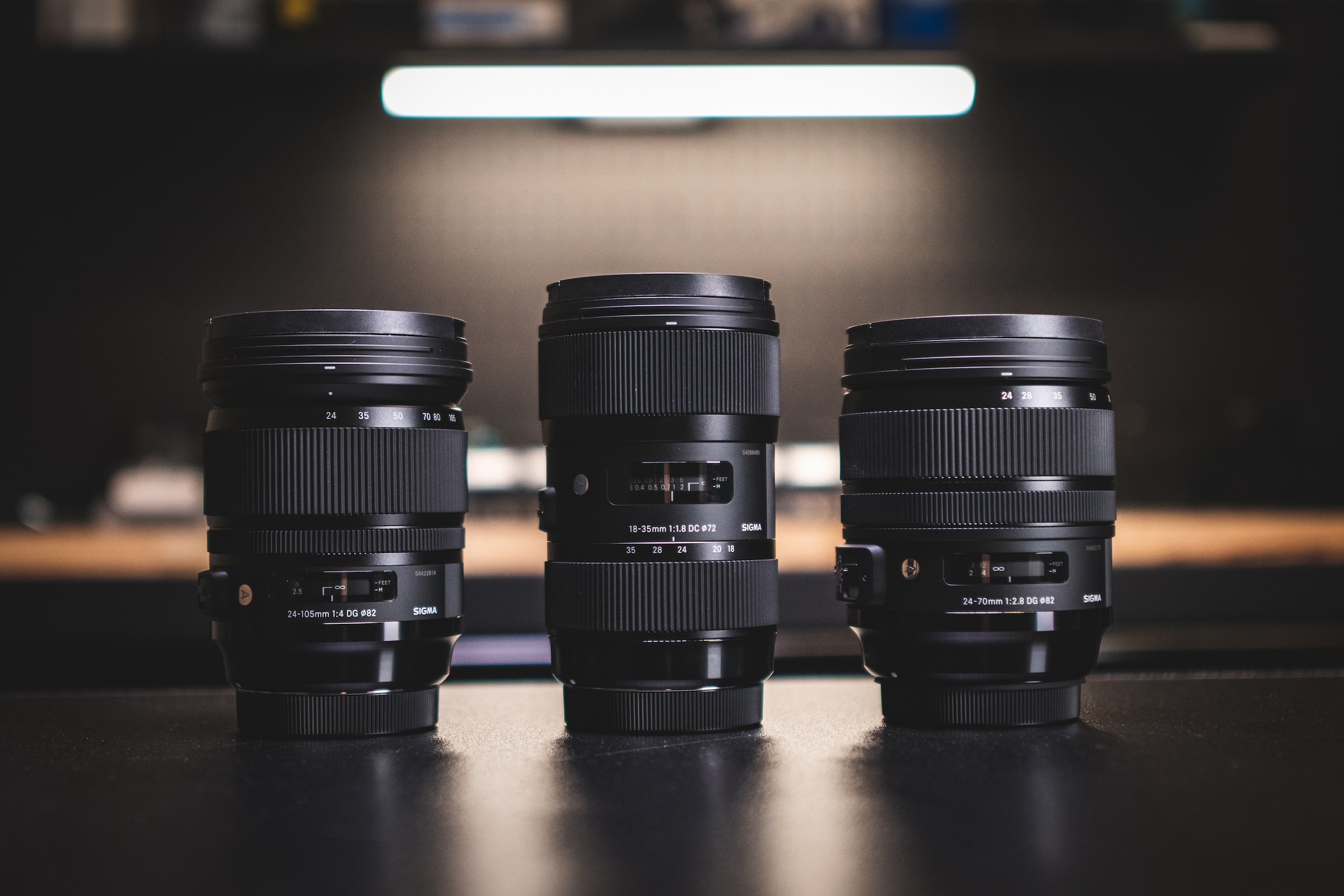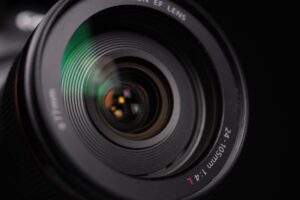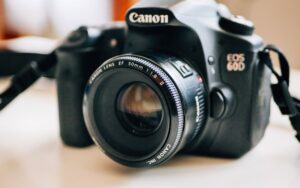Are camera lenses universal? The short answer is no, not all camera lenses are universally compatible, but the reasons behind this are fascinating and crucial for photographers to understand.
Dating back to the early days of photography, camera lenses have undergone significant transformations.
From the pinhole cameras of the 19th century to today’s advanced DSLRs and mirrorless systems, lenses have always been pivotal in shaping the art and science of capturing moments.
Understanding lens compatibility is not just a matter of technicality; it’s about unleashing the potential of your camera.
It paves the way for photographers, both amateur and professional, to experiment, innovate, and tell stories in ways they never thought possible.
Interchangeability and Benefits For Camera Lenses
The world of photography is as vast as it is dynamic.
One day you might be capturing sweeping landscapes, the next, intricate details of a dew-kissed spider web. This versatility is largely owed to the concept of lens interchangeability.
What Makes a Lens Interchangeable?
Simply put, an interchangeable lens is one that can be detached from a camera body and replaced with another.
Not all cameras allow for this – for instance, many point-and-shoot cameras come with a fixed lens. However, DSLRs (Digital Single-Lens Reflex cameras) and mirrorless cameras offer this fantastic feature.
Advantages of Using Interchangeable Lenses
- Versatility: Switch between wide-angle, telephoto, or macro lenses based on the scene.
- Better Image Quality: Specialized lenses often deliver sharper and clearer photos.
- Cost-Efficiency: Instead of buying multiple cameras, invest in varied lenses for one camera body.
- Creativity: Experiment with depths, angles, and perspectives that wouldn’t be possible with fixed lenses.
- Future-Proofing: As technology advances, you can always upgrade just the lens, keeping your camera body intact.
Lens Mount Systems and Compatibility
When we talk about lens interchangeability, the conversation inevitably leads to lens mount systems.
These are essentially the interfaces (both mechanical and electrical) where the camera body and lens connect.
What is a Lens Mount System?
A lens mount system is a standardized interface that allows specific camera lenses to attach to specific camera bodies. It’s like the DNA of your camera setup, determining which lenses you can easily use.
How Lens Mounts Determine Compatibility
- Mechanical Fit: The physical dimensions and design of the mount ensure the lens fits snugly and securely.
- Electrical Connectivity: Modern lenses often have electronic components for autofocus, aperture control, and image stabilization. The right mount ensures these features work seamlessly. Dive deeper into the mechanism of lenses with our article on how camera lenses work.
- Flange Distance: This is the space between the lens mount and the camera sensor. Different cameras have different flange distances, affecting compatibility.
Did You Know? Changing the lens without considering the flange distance might lead to a lens not focusing correctly or, in some cases, not focusing at all.
The key takeaway? While it might be tempting to think any lens can fit any camera, the reality is more nuanced.
A deep understanding of lens mounts is essential for photographers who wish to explore the full spectrum of what their gear can achieve.
Adapting Lenses Across Different Camera Brands
The age-old debate: Can a Nikon lens fit on a Canon body? Or vice-versa? Let’s dive deep and bust some myths.
The Feasibility of Using Lenses Across Brands
In theory, if a lens can be mounted on a camera (either directly or with an adapter) and if the flange distance is appropriate, it can be used.
However, there are caveats:
- Loss of Features: Autofocus might not work, or it might be slower.
- Potential for Vignetting: Especially if the lens isn’t designed for the camera’s sensor size.
- Quality Degradation: Some adapters might compromise image quality.
Examples of Successful Lens Adaptations
- Sony E-mount cameras with Canon EF lenses: Many photographers vouch for the quality of this combination using specific adapters.
- Micro Four Thirds cameras with Vintage lenses: An enticing combo for those seeking a unique look.
Remember, while adapters can make many impossible pairings possible, always do thorough research.
Reasons for Interchangeable Camera Lenses
With a range of lenses available in the market, the power to change them offers photographers unprecedented versatility.
But why exactly do photographers feel the need to interchange lenses?
Enhancing Photography Versatility
Every lens has a story to tell, and choosing the right one can be daunting. If unsure, it helps to know what camera lens you might need.
A wide-angle lens might capture vast landscapes, while a prime lens might be perfect for portraits with beautiful bokeh.
By interchanging lenses, photographers can narrate different stories, each with its unique perspective.
Pro Tip: A prime lens with a large aperture (like f/1.8) is excellent for low light photography and achieving dreamy background blur.
Adapting to Different Photography Scenarios
Different situations call for different tools:
- Wildlife Photography: A telephoto lens lets you capture animals from a distance.
- Astrophotography: A wide-angle lens with a wide aperture captures more of the night sky.
- Sports and Action: A lens with fast autofocus ensures you never miss the action.
- Macro Photography: Get up close and personal with the tiniest subjects.
The beauty of interchangeable lenses is the freedom to adapt and evolve, to never be confined to a single narrative.
The world is a vast canvas, and with the right lens, a photographer can paint any picture they desire.
Compatibility Challenges and Lens Adapters
While the idea of swapping lenses sounds dreamy, it’s not always sunshine and rainbows. There are challenges, but fortunately, also solutions.
Common Challenges Faced When Trying to Interchange Lenses
- Incompatibility Issues: Not every lens fits every camera.
- Loss of Automatic Functions: Features like autofocus might not work.
- Image Quality Degradation: Some combinations might compromise sharpness.
How Lens Adapters Can Help Overcome These Challenges
Lens adapters are like bridges, connecting a camera and a lens that wouldn’t naturally fit together. They come with their sets of pros and cons.
Benefits of Using Lens Mount Adapters:
- Increased Versatility: Use lenses from different manufacturers or even vintage lenses.
- Cost Savings: No need to buy a new camera to use a specific lens.
- Experimentation: Discover unique combinations for creative results.
Drawbacks and Considerations When Using Adapters:
- Potential Quality Loss: Especially with cheaper adapters.
- Slower Autofocus: Or complete loss of autofocus in some cases.
- Added Weight and Bulk: Can make the camera setup heavier.
Key Takeaway: Adapters are fantastic tools, but they’re not magic wands. While they unlock numerous possibilities, photographers should be aware of the compromises.
Camera Lens Mount Types and Popular Brands
If the camera body is the heart of your photography setup, then the lens mount is its veins, determining the flow and compatibility of lenses.
Let’s discuss the diversity of lens mounts across popular brands.
Introduction to Different Lens Mounts
Lens mounts have evolved over time, dictated by technological advancements and the needs of photographers.
They can generally be categorized by their dimensions, electronic connections, and the brands that employ them.
Popular Brands and Their Respective Lens Mounts
| Camera Brand | Common Lens Mounts |
| Canon | EF, EF-S, EF-M, RF |
| Nikon | F-mount, Z-mount |
| Sony | A-mount, E-mount |
| Panasonic/Lumix | Micro Four Thirds (MFT), L-mount |
| Fujifilm | X-mount, GFX |
| Olympus | Micro Four Thirds (MFT) |
| Leica | M-mount, L-mount |
| Sigma | SA-mount, L-mount |
Understanding the Uniqueness of Lens Mounts
While lens mounts may look somewhat similar to the untrained eye, each has unique attributes:
- Flange Distance: As mentioned earlier, this is the gap between the mount and the sensor. Each mount type has its specific distance.
- Electronic Connections: The number and arrangement of these connections, which facilitate features like autofocus, vary across mounts.
How Brands Differentiate Their Mounts for Competitive Advantage
Brands evolve their lens mounts not just for technical reasons but also for strategic ones:
- Proprietary Technology: By having unique mounts, brands can offer features exclusive to their ecosystem.
- Market Segmentation: Different mounts can cater to different audiences, from professionals to hobbyists.
- Upgrade Path: Brands sometimes introduce new mounts to pave the way for future technologies, nudging users to invest in newer gear.
Why Aren’t All Camera Lenses Universal?
It’s a burning question on many a photographer’s mind: If it would make life so much easier, why aren’t all camera lenses universal?
Technical Reasons
Photography is both an art and a science. The latter is evident in the intricacies of lens design.
- Sensor Size Compatibility: A lens designed for a full-frame camera might not produce the same results on a crop sensor.
- Optical Design Variations: Each brand has its optical formulae, producing varying image qualities, color renditions, and sharpness.
- Electronic Communication: Different brands use different electronic protocols for autofocus, aperture control, and stabilization.
Brand-Specific Reasons
Beyond the technicalities, there are some strategic reasons brands prefer proprietary mounts.
- Brand Loyalty: Once you’ve invested in lenses for a particular brand, you’re more likely to stick with that brand for future purchases.
- Innovation and Control: Having a proprietary system allows brands to innovate without waiting for a universal standard to catch up.
- Economic Strategy: Brands can control pricing, features, and upgrades within their ecosystem.
The Evolution of Lens Designs
Historically, photography was a mechanical affair.
With the digital revolution, lenses incorporated electronics, leading to an explosion in design diversity.
- Past: Lenses were often manual, with no need for electronic communication.
- Present: Digital lenses often come with autofocus motors, stabilization systems, and electronic aperture controls.
Though a universal lens system sounds like a utopia for photographers, it might stifle the rapid innovations we see in the world of photography.

DSLRs vs. Compact System Cameras
So, what’s the different between DSLRs and Compact System Cameras (CSCs)? Their lens compatibility varies, and it’s crucial to understand these distinctions.
Differences in Lens Compatibility
DSLRs (Digital Single Lens Reflex):
- Bulkier Design: Thanks to the internal mirror mechanism.
- Optical Viewfinder: You see directly through the lens.
- Broad Lens Range: Established systems mean a wider variety of lenses.
- Mount Types: Brands like Canon use EF/EF-S, Nikon uses F-mount, etc.
Compact System Cameras (also known as Mirrorless Cameras):
- Slimmer Build: No mirror mechanism inside.
- Electronic Viewfinder (or none): Digital display of the scene.
- Growing Lens Range: Younger but rapidly growing lens ecosystem.
- Mount Types: Canon uses RF, Sony has E-mount, Nikon employs Z-mount, etc.
Can You Change the Lens on Compact System Cameras?
Absolutely! Despite their smaller form factor, CSCs have interchangeable lenses.
The options might be slightly fewer than DSLRs, especially for newer systems, but the list is rapidly expanding.
Brands are recognizing the demand for high-quality lenses in the mirrorless market and responding accordingly.
| Advantages of CSCs | Advantages of DSLRs |
| Lighter and more portable | Extensive lens and accessory options |
| Faster autofocus in many models | Optical viewfinder offers real-time viewing |
| Silent shooting capabilities | Often rugged and durable design |
| Modern features like in-body stabilization | Established user base and community support |
How To Determine What Lens Mount Your Camera Has
Lost in the jargon of mounts? You’re not alone! Identifying your camera’s lens mount is the key to ensuring compatibility.
Tips and Tricks to Identify Your Camera’s Lens Mount
- User Manual: The most straightforward source of information. Always check your camera’s manual first.
- Camera Body: Many cameras have the mount type inscribed near the lens mounting area.
- Brand’s Official Website: Go to the specifications section of your camera model.
- Photography Forums: Platforms like DPReview and PhotographyTalk are full of enthusiasts who can help.
Importance of Knowing Your Lens Mount for Compatibility
Knowing your lens mount is similar to understanding your shoe size when shopping for footwear. Without this knowledge:
- You risk purchasing incompatible gear.
- You might miss out on the best lenses for your needs.
- You could harm your camera or lens by trying to force an incorrect fit.
FAQs
Are all camera lenses universally compatible?
No, all camera lenses are not universally compatible. Lenses are typically designed for specific camera mounts, which vary across brands and even within the same brand. Adapters can sometimes bridge the compatibility gap, but it’s always best to check the mount type before purchasing.
What are interchangeable camera lenses?
Interchangeable camera lenses are those that can be detached from the camera body and swapped with another lens. This flexibility allows photographers to choose the ideal lens for a particular shooting scenario, from wide-angle landscapes to tight telephoto shots.
Can I use any camera lens on any camera body?
Not directly. While the idea is tempting, lenses are designed for specific camera mounts. Adapters can sometimes facilitate the use of one brand’s lens on another’s body, but with varying results and functionalities.
How do I determine if a lens is compatible with my camera?
Check the lens mount type. Every camera and lens specifies its mount type (e.g., Canon’s EF or EF-S, Nikon’s F-mount). Ensure that both the lens and camera share the same mount for compatibility. Consulting your camera’s manual or the brand’s official website can provide clarity.
Are there adapters to make non-compatible lenses work?
Yes, lens mount adapters exist. They allow you to fit lenses from one system to a camera body of another. However, using adapters might result in limited functionalities like manual focus only or a loss of image quality.
Which camera brands have interchangeable lenses?
Most major camera brands offer systems with interchangeable lenses. This includes Canon, Nikon, Sony, Fujifilm, Panasonic, Olympus, Leica, and many more.
What are the benefits of using universal camera lenses?
While truly universal camera lenses are rare, the idea promises several benefits: easier transitions between brands, cost savings by reusing lenses across different bodies, and greater flexibility in mixing and matching gear.
Conclusion
The world of photography is as much about the gear as it is about the vision.
For those itching to expand their photography arsenal, and buy more lenses, the road ahead is clear – research, understand, and choose wisely.
Your lens is not just a piece of equipment; it’s your bridge to the many stories the world holds.
To the beginners stepping into this realm, to the enthusiasts seeking to broaden their horizons, and to the experts always on the lookout for the next best gear – always remember to pair your technical knowledge with your boundless creativity.
Because, at the end of the day, it’s not just about the lens you have but the vision you hold.









Pingback: Lens Curvature Explained: Are Camera Lenses Concave Or Convex? - Photography Explorer
Pingback: Do Camera Lenses Wear Out? Top Tips to Maximize Lens Life - Photography Explorer